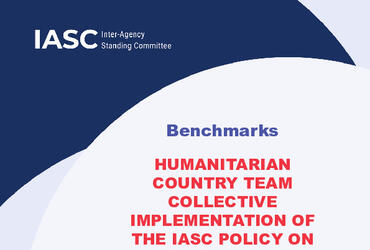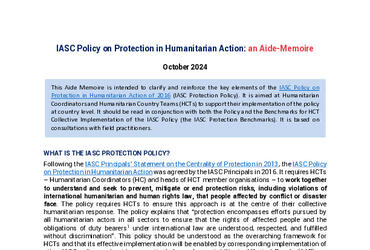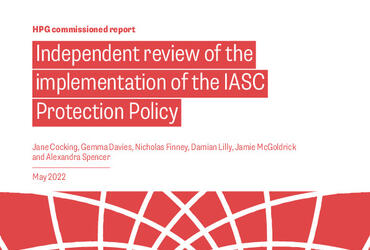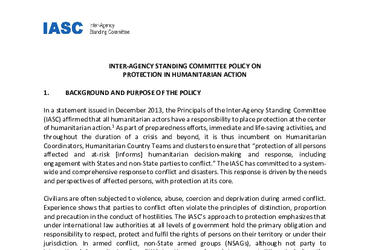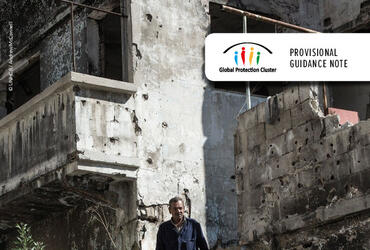The Approach
In a Statement issued in December 2013, the Principals of the Inter-Agency Standing Committee (IASC) affirmed that all humanitarian actors have a responsibility to place protection at the center of humanitarian action. The IASC has committed to a systemwide and comprehensive response to conflict and disasters. This response is driven by the needs and perspectives of affected persons, with protection at its core.
In October 2016, the Inter-Agency Standing Committee (IASC) adopted its Policy on Protection in Humanitarian Action. The policy defines the centrality of protection in humanitarian action, as per the December 2013 statement of the IASC Principals, as well as the process for its implementation at country level. In doing so, it seeks to reinforce complementary roles, mandates and expertise of all relevant actors. Specifically, the policy emphasizes an IASC commitment to prioritize protection and contribute to collective protection outcomes, including through the development of a Humanitarian Country Team (HCT) protection strategy to address the most critical and urgent risks and violations. It also underlines the need to implement this commitment in all aspects of humanitarian action and across the Humanitarian Programme Cycle (HPC). As such, the collective IASC roles and responsibilities in placing protection at the center of humanitarian action are explained, with due consideration for mandates and expertise and in line with humanitarian principles.
Six key elements
- The Humanitarian Coordinator (HC) is responsible for leading and coordinating relevant organizations to design and deliver a humanitarian response that is principled, timely, effective and efficient, and contributes to longer-term recovery. The HC has a fundamental role to play in ensuring that protection informs decision-making in the HCT and that protection priorities are identified and result in collective action.
- The HCT must commit to share information and analysis on protection as well as to prioritize and contribute to collective efforts to enhance protection for affected persons, in accordance with each member’s expertise and mandate.
- Humanitarian actors should address protection issues that intersect with their formal mandates and sector-specific responsibilities. This includes protection mainstreaming, protection integration and specialized protection activities.
- Humanitarian actors must engage collectively to achieve meaningful protection outcomes that reduce overall risks to affected persons by decreasing threats, reducing vulnerability, and enhancing capacities. At country level, the development of a HCT protection strategy, or equivalent framework, must focus on addressing critical protection risks, and prompt collective action in complement to the Humanitarian Response Plan and the protection cluster strategy.
- The HC and HCT must mobilize other actors within and beyond the humanitarian system, as appropriate, to contribute to collective protection outcomes. Addressing protection risks often goes beyond the capacity of the humanitarian community which requires engagement and advocacy with a broad range of stakeholders beyond the humanitarian response.
- Humanitarian actors must evaluate commitments and progress towards placing protection at the center of the humanitarian response. The HCT must regularly monitor and evaluate its progress in working collectively to achieve protection outcomes and reducing the exposure of affected persons to risks and violations, as well as in supporting affected persons to enjoy their rights without discrimination.
The Global Protection Cluster has issued regular reviews on the implementation of the Centrality of Protection in Humanitarian Crisis since the endorsement of the Policy in 2016, drawing attention to achievements, challenges and gaps experienced in field operations. In 2022, the IASC Principals commissioned a review to assess implementation of the Protection Policy in a number of humanitarian crises. The review identified critical issues that had impacted the implementation of the Policy, highlighting key enablers and barriers to progress.
The different reviews can be accessed below.
For more information
Marie-Emilie Dozin
Global Protection ClusterUNHCR
Mail: [email protected]





